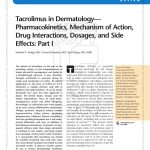
Contents
Star Anise: Uses, Benefits, and Risks
Star anise is a unique spice known for its flavor and aroma. It is used to treat infections, regulate blood sugar, fight cancer, and improve heart health.
It forms an integral part of many Chinese recipes and has been used in traditional Chinese medicine for centuries. Western medicine practitioners also value star anise for its antimicrobial properties and therapeutic potential.
Star anise, also called star aniseed, is a well-known spice in Asian cuisine. It is harvested from the star-shaped pods of Illicium verum.
This spice is used in various countries around the world and has different names in different regions, such as Chinese star anise, Bajiaohuixiang in China, Anasphal and Sonf in India, and Bungalawang in Indonesia.
Farmers harvest star anise when it’s still green and unripe, and then dry it to enhance its distinct flavor.
Star anise is a versatile herb that can be used in cooking and manufacturing. Its oil and seeds are widely used as flavoring agents in China and other South Asian countries.
Due to its fragrance, star anise’s oil is also used in perfumes, cosmetics, soaps, toothpaste, and to mask the smell of medicines and drugs.
Nutritional Profile
Star anise is low in carbohydrates, fats, and calories, but rich in minerals and bioactive compounds. It contains calcium, magnesium, potassium, sodium, copper, iron, and manganese.
The most important components of star anise are its powerful chemicals, including flavonoids, polyphenols, terpenes, alkaloids, steroids, and tannins.
Some of the most studied compounds in star anise are shikimic acid, anethole, linalool, gallic acid, quercetin, and limonene, which contribute to its antimicrobial, antioxidant, and anti-inflammatory effects.
Health Benefits
Star anise has positive effects on health due to its phytochemical content.
Treating microbial infections: Star anise’s bioactive compounds can help fight various microbes, including antibiotic-resistant bacteria. It also has antifungal properties and can help treat viral infections.
Regulating blood sugar: Anethole in star anise helps regulate blood glucose levels, making it beneficial for diabetes management.
Fighting cancer cells: Star anise’s antioxidants can protect cells from oxidative damage. Some studies suggest it may help prevent tumor growth, although further research is needed.
Improving heart health: Limited studies show that star anise may help regulate blood pressure, control lipids, and protect heart cells from damage.
Side Effects
Star anise is generally safe, but caution is needed with Chinese star anise products that may be contaminated with toxic Japanese star anise. Potent neurotoxins in Japanese star anise can cause severe health issues, especially in infants.
It is recommended to avoid star anise products if you have spice or mugwort weed pollen allergies.
It is also advisable to verify the source and purity of star anise products before consumption, especially for infants, children, pregnant women, and nursing mothers.
Consult your doctor if you have any doubts regarding the use of star anise products based on your medical history.
Best Ways to Use Star Anise
Star anise enhances the flavor of various dishes, including curries, soups, and baked goods. It can be used in its whole or powdered form.
Due to its distinct aroma, star anise is also used in desserts and sweet dishes. Carefully check the package ingredients to ensure pure Chinese star anise.
While star anise tea is not recommended, traditional medicine practitioners believe it can help with nausea, respiratory infections, constipation, and other digestive issues. However, caution must be exercised to ensure the quality and origin of the star anise used.
Use star anise in moderation for cooking and consult your doctor if you have any concerns.
Sources: [1] [2] [3] [4] [5] [6] [7]


